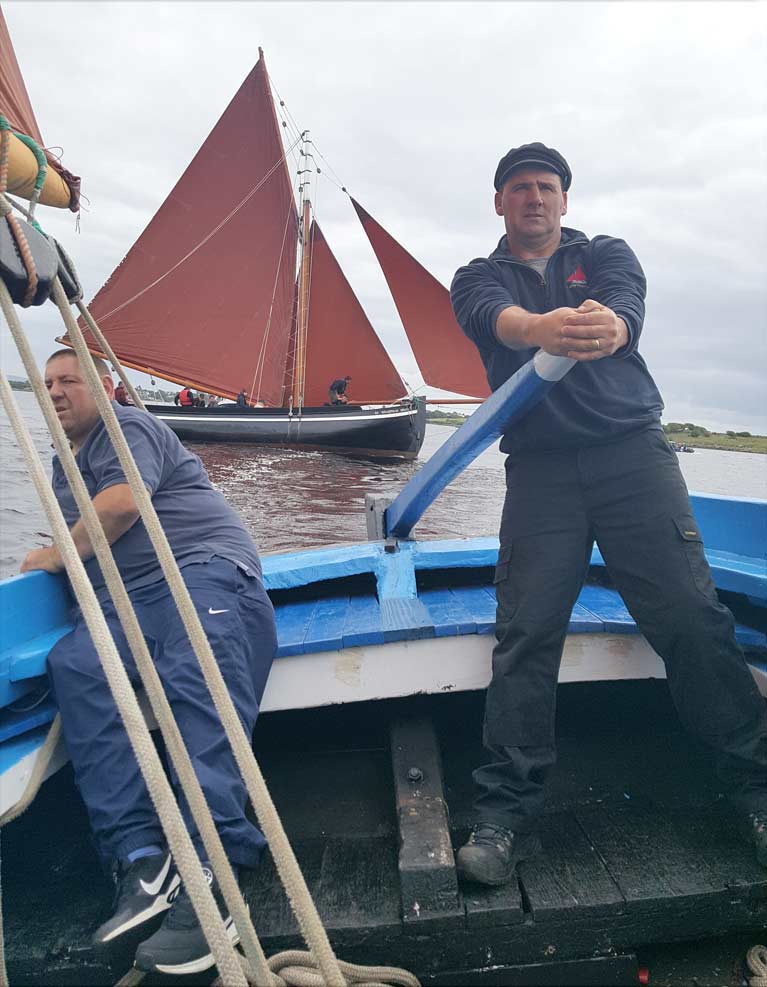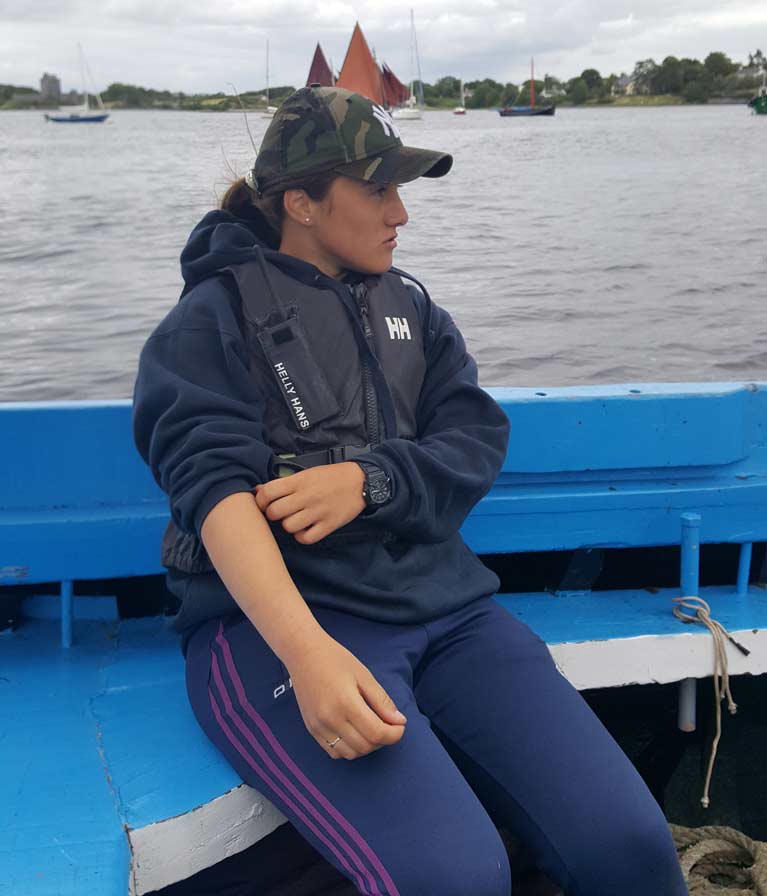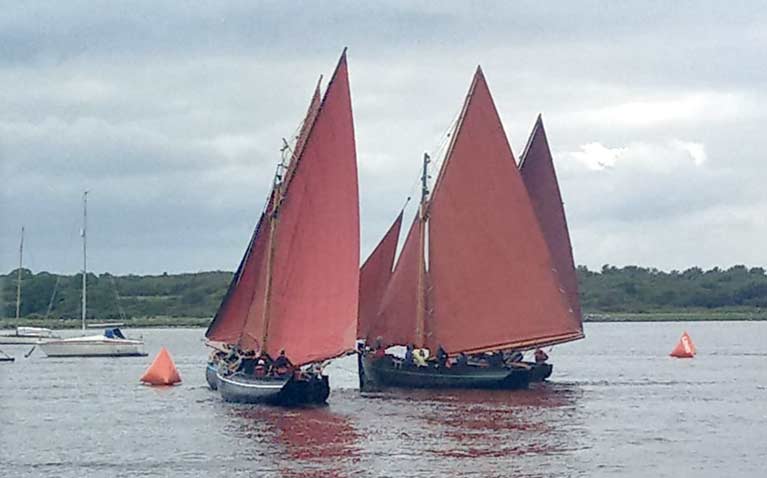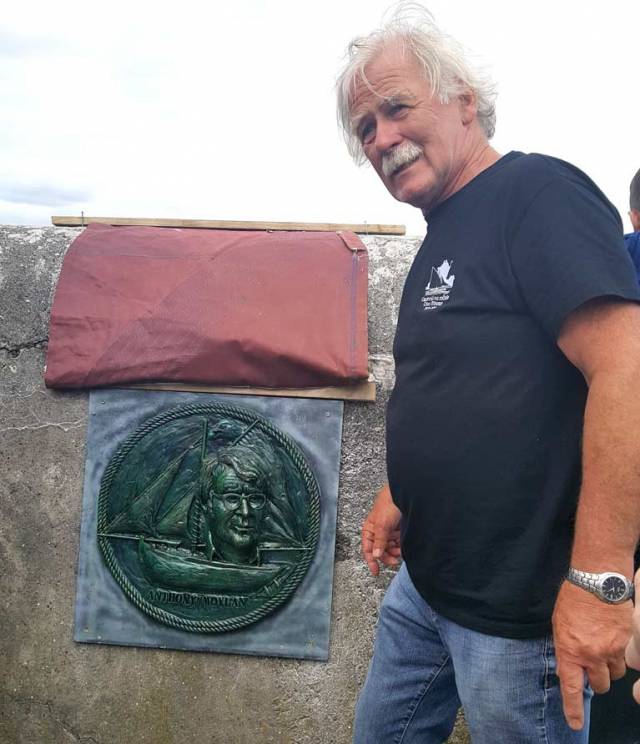The Galway man who is regarded as a leading light in the revival of interest in Irish turf trading craft has been immortalised in his home harbour writes Lorna Siggins
Figurative sculptor John Coll has designed a plaque depicting the late Tony Moylan, which has been unveiled at the head of Kinvara pier.
Mr Moylan’s widow Phil attended the unveiling to mark the 40th anniversary of the annual gathering of Galway hookers, which took place in Kinvara bay over the past weekend.
Dr Michael Brogan, a close friend and of the festival’s main organisers, said the plaque had been cleverly sculpted to incorporate a bird with an egg in its mouth - reflecting Mr Moylan’s role in Fleadh na gCuach, Kinvara’s highly successful” cuckoo festival” of traditional music.
“Tony didn’t just form Cruinniú na mBád, he also founded Fleadh na gCuach, “Dr Brogan said.
A carved bench made by the Kinvara men’s shed group has been placed at the pier head beside the plaque to remember Mr Moylan.
 The helmsman of the Galway Hooker An Capall, Dara Flaherty
The helmsman of the Galway Hooker An Capall, Dara Flaherty
 Chantal Flaherty, a crew member of An Capall where her father is the helmsman
Chantal Flaherty, a crew member of An Capall where her father is the helmsman
“The seat is in the shape of the middle beam of a hooker...it even has the bend of a hooker on it. So people can come here and talk to Tony, and sit down in peace and quiet, “Dr Brogan said.
It was Mr Moylan who persuaded three of the oldest turfboats - An Capall, An Tonaí and An Maighdean Mhara- to revive a sea journey from south Connemara to south Galway in 1979.
The limestone Burren and neighbouring Aran islands had no landscape for turf, and the trading vessels with their distinctive “tumblehome” hulls carried turf to south Galway, Clare and the Aran Islands for generations.

All three vessels, classed as “bád mór” or the largest design in the Galway hooker fleet, have participated in the annual “Cruinniú” in Kinvara for years as part of the regatta season.
An Capall, built in the 1860s in Leitir Móir and owned and fished by the late Johnny Bailey, sailed under the helm of Dara Flaherty at the weekend, with Bailey’s son Pádraig and Flaherty’s daughter Chantal (14) among the crew.
Former badóirí who have passed away were remembered during the 40th-anniversary event, which was attended by hundreds of people.
Music, horseshoe throwing, a harbour swim, seaweed raft racing and talks hosted by the Cuan Beo environmental organisation based in south Galway took place during the three-day event.
Heavy rain and gales disrupted gleoiteog racing on Saturday, but moderate winds on Sunday made for keen racing up Kinvara bay, with a fleet of six bád mór vessels chased by the leath-bhád or smaller design.
The Irish Coast Guard’s Shannon-based Rescue 115 helicopter flew over the course, and the RNLI was among organisations represented on the pier.
A community campaign to declare Kinvara free of single-use plastics was also initiated over the weekend. The campaign includes an “earth keepers’” initiative for young school children and is supported by the local tidy towns committee.































































